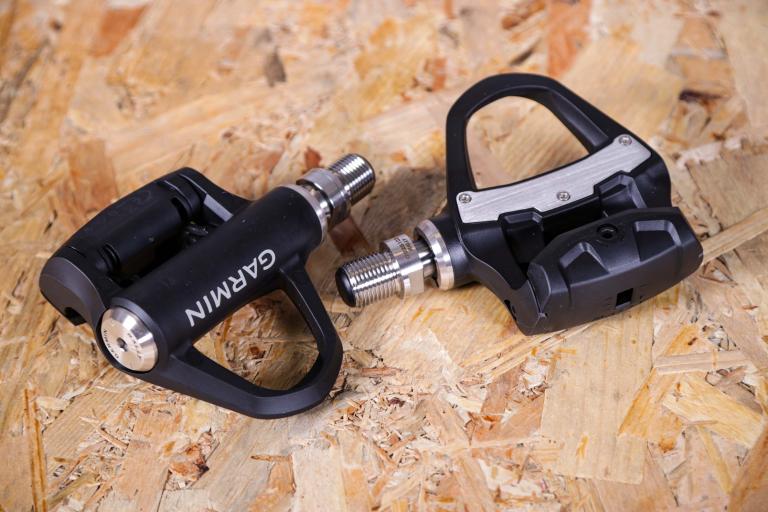Advances in Measurement Accuracy
A new power meter is one of the best upgrades in terms of the increased precision of cycling metrics you can get. Rather than relying on sporadic samples of data as older models did, modern power meters use the advanced strain gauge technology to collect reported data at much higher frequencies, often many times per second. For example, during a hill climb, using a modern power meter would allow viewing how the power output changes with each pedal stroke.
One could see that they need to apply power more smoothly and stop trying to press harder on a pedal until their foot passes the top. Additionally, the most vital feature of a modern power meter is real-time feedback. It is useful for adjusting one’s pace when riding a long ride or competing in a race. The data read from the meter could inform the cyclist that they are pressing too hard too early in the process of the race, so they need to slow down their progress to avoid burning out.
The modern power meters can produce satisfactory data output for instant effect adjustment. Coaches and training experts also recommend such an approach to avoid devastating oneself during a race and saving strength for crucial parts. In addition to the ability to provide feedback, the latest power meters are also more connected than their older counterparts. They can be easily linked to most cycling computers and smart devices to provide accurate and high-resolution data.
This would allow, examining power data in combination with a heart rate monitor and the bike’s cadence after purchasing an upgrade. Moreover, some of the best power meters are more durable and have a longer battery life, so they are less likely to fail in the middle of a long ride. The newest models are also tested to provide reliable readings in extreme temperatures and high humidity, so the vast majority of them will have no issues recording proper data at advantageously low temperatures or slightly above them.

Improved Battery Life and Connectivity
I am an old-style power meter user, and I chose this topic because I am interested in modern meters’ advantages. Upgrading to a newer power meter drastically improves battery longevity and connectivity, which are two critical aspects for serious cyclists.
Modern meters come with batteries that can last up to 100 hours and even more in some cases, meaning that a cyclist will not have to replace it every few days or weeks. As for connectivity features, modern meters can be easily synchronized with a host of devices.
You can be connected to your smartphone using a wireless connection protocol, such as Bluetooth or ANT+. Cyclists can also use the same connectivity devices to sync their power meters with their GPS devices and find out where they are going, their distance traveled, and their cadence. Such a feature is especially useful in a scenario of a multiday training program or a cycling tour.
Power Meter and Apps Integration
To complement, the above, modern power meters are also introduced with an application that allows one to train more effectively. Connected to, for instance, the Strava or TrainingPeaks application, the descriptor’s data provide a number of personalized options and plans. As such, a rider can view his route on a map and the elevation of a climb. By transferring his data to an application and comparing the same track in a different condition, a rider can also be connected with a coach who will give some training ideas based on a previous ride. Such a level of integration will help a cyclist maximize the potential of one’s training plans and improve overall success.
Firmware Improvements
To conclude, the newest power meters also have improved firmware, meaning that one will not need a newer device after their introduction. The firmware updates may include some battery-saving improvements or new features, such as diagnostics.
New Features That Enhance Training
Advanced features of modern power meters cater almost exclusively to improving training outcomes. Today’s power meters give cyclists the capability to not only track basic information such as power and cadence but also to analyze it for highly detailed insights.
Dual-Sided Measurement
The first generation of power meters often measured power on one side and doubled the results to estimate the power generated by both legs. Modern power meters are dual-sided and measure power from both legs, thus producing a reading of balance and pedaling efficiency. For example, if a cyclist was recently injured and now they are recovering, they will be able to see that one leg is weaker than the other. As a result, they would know if they started overcompensating with the other leg or ended up introducing an imbalance in recovery.
Incline Measurement
On the road, it is possible to see the grade of any road, given the rider knows it. However, the steepness of a trail ridden on a mountain bike or a trail where the grade is not widely known is much harder to measure accurately. Incline measurement technology uses an accelerometer or even a gyroscope to measure the grade of any slope ascended or descended in real time. This feature allows for optimal power adjustments for every incline and the best strategy to tackle it. In addition, riders can use measured grades to compare their power output during climbs and learn how to improve in this area or conserve energy during long downhills.
Torque Effectiveness and Pedal Smoothness
Torque effectiveness describes how effectively a rider is converting their power into torque and applying it to the pedals. In the same vein, pedal smoothness measures how smoothly a rider turns the pedals. High torque effectiveness means less power is wasted and a higher speed. Cyclists can use the best meters to see, evaluate and improve their torque effectiveness during training rides. Over time, this leads to higher power readings with no additional effort put in.
Temperature Compensation
The advent of temperature compensation technology, also known as surprising compensation, in the latest models of power meters means that today’s units are more accurate than ever. This feature is essential as trainees can now be sure that no matter what they are training for, the data of relevant strain gauges will not be compromised due to weather conditions.
Better Compatibility with Modern Devices
The above reasons have had the most pronounced effects on my final buying decision. Upgrading to the latest power meters ensures better compatibility with the broadest possible array of modern training devices and software, which is vital for riders. With the increased popularity of different training and analysis methods, the support of all types of data transfer is essential.
The first reason is the support of a broad array of connectivity protocols. Modern power meters can send their data via Bluetooth Smart (BLE) and ANT+ to nearly any cycling computer, smartwatch, or smartphone. This feature is very important because cyclists can select any device they like on the market without any restrictions. The ability to change the type of device without worrying about compatibility also means that riders can discard their old cycling computer and replace it with the latest smartwatch without suffering from disrupted logging of power data and other important metrics.
The second primary reason is real-time syncing for the immediate transfer of data to mobile apps and cycling computers. This process allows the devices used during rides to provide immediate alerts and feedback based on power data. If a cyclist needs to maintain a certain power zone during an interval session, they will receive an alert the very second they start riding too slowly or too quickly. This ensures the effectiveness of each training session. Also, the power meters will continue to work with multiple devices, meaning that one buyer can use their power meter for both a phone in their pocket for post-ride analysis and data transfer and a handlebar-mounted computer for quick-reference purposes. This feature is very important for coaches and teams, who need to monitor the data of multiple athletes in real-time. Finally, modern power meters can receive firmware updates over the air, which means that they will not become outdated as soon as a new version is released because the updates will be installed automatically.
Trade-In and Upgrade Options Available in the Market
Investigating the availability of trade-in and upgrade programs appears to be one of the most cost-effective ways of obtaining cycling technology without paying in full for a brand-new power meter. The present options for purchasing a more advanced power meter while not overburdening one’s budget include looking for manufacturer trade-in programs, retailer upgrade discounts, refurbished models, and peer-to-peer exchange platforms.
Manufacturer Trade-In Programs
To help serious cyclists purchase the latest models of power meters from their brand, many power meter manufacturers include the possibility of trade-in programs in their customer loyalty policies. These programs afford a discount on the further purchase of power meters of the latest models following the return of the old one. This option not only makes the equipment more affordable but also guarantees that the customer is provided with the most up-to-date technology. For example, replacing an old unit with a new model may make a prominent power meter company’s product up to 30% cheaper for the cycling enthusiast. This type of offer appears to be one of the most common among the options, considering the list of manufacturer benefits.
Retailer Upgrade Discounts
Similar to manufacturers, many cycling retailers and online stores provide store upgrades to the new generation of power meters. In some seasonal sales or due to the existing loyalty programs, a further reduction in power meter costs may be available. Such sales are usually performed off-season, annually or at other intervals. As a part of the discount policy, the customers may are usually given a limited period, and a loyal client of a particular store may be given additional benefits. For example, some online stores selling cycling equipment can have a general annual sale. During this action, the cyclist can upgrade the old power meter to a newer model with significant discounts. In addition, one can get an additional bonus, like an exchange discount, related to the passing of the product installation procedure. Moreover, the store provides the warranty service for the product sold.

Refurbished Models
Many good power meters come with a higher price in the market. This factor does not always prove to be affordable for the cyclist. For those who are short on budget but still strive to buy the best device possible, a range of refurbished models allows paying 20% to 50% less than for a newer device. Refurbished power meters are the units that have been returned, subsequently repaired, and at this point, restored to previous good condition. They already come with the provided manufacturer’s warranty. Describing it from the cost-benefit perspective, the option to purchase a refurbished power meter lets save between 20% and 50% of the sum to be paid in the case of a completely new unit. Regardless, the equipment appears to be as high-tech, considering it is refurbished. Thus, cycling fans who are unable to afford the newest models may use this chance to purchase equipment of high quality.
Peer-to-Peer Exchange Platforms
Finally, peer-to-peer exchange platforms provide a wide range of options for the sale, purchase, and exchange of used power meters. Numerous eBay sales, commercial posts on Facebook and other social networks, as well as cycling-specific forums, allow cycling enthusiasts to reach favorable agreements of buying a used or almost new power meter, sold by the owner. With sufficient luck and effort, one can purchase an outstanding item with no real difference from the new one. The fees will be significantly smaller than in the case of new merchandise, and the previous owner will warn about the extent of use.




